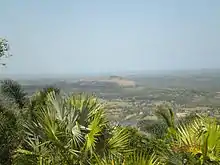Environment of Cuba
Cuba possesses a diverse range of natural habitats, housing a wide variety of species, including many endangered ones. However, the country has faced environmental challenges, particularly deforestation, since the arrival of European settlers. Forest areas have been cleared for agricultural purposes, leading to the loss of forests and the extinction of certain species. The cutting down of trees for fuel and construction materials has further contributed to this issue.
Environmental awareness has grown in Cuba over the years. In the late 1990s and 2000s, the Cuban government initiated new programs aimed at protecting the environment and increasing forest coverage. These efforts demonstrate a commitment to preserving the natural heritage of Cuba and safeguarding its biodiversity.
Environmental issues

Soil and desertification are the main causes of environmental problems. In addition, Cuba has other issues such as deforestation, water pollution, the loss of biodiversity, and air pollution. Soil degradation and desertification are produced by the lack of good farming techniques and natural disasters. Deforestation is killing the forest, for example, cutting down trees. Water pollution is the contamination of water caused by different industries.[1] Also, the loss of biological diversity is caused by the extinction of different animal species. Lastly, air pollution largely caused by the increasing number of "old" cars that fill Cuba's streets.

Cuba had a 2018 Forest Landscape Integrity Index mean score of 5.4/10, ranking it 102nd globally out of 172 countries.[2]
Environmental solutions
One of the main solutions used by Cuba to regulate the environmental problem was creating an Environmental Educational program. This helped with the environmental problems by educating Cuban people about observing the environment.[3] For example, the community was contributing to neighborhood clean-up techniques. The government created new methods to prevent the destruction of the environment, such as organic farming versus using chemicals to treat the lands. Designated areas were built for garbage and industrial waste instead of dumping them into the Havana Bay.
References
- United Nations Environment Program. Conference on Water, Report of Cuba. Volunteer Hydraulic. 2001; 13(39): 47–59.
- Grantham, H. S.; Duncan, A.; Evans, T. D.; Jones, K. R.; Beyer, H. L.; Schuster, R.; Walston, J.; Ray, J. C.; Robinson, J. G.; Callow, M.; Clements, T.; Costa, H. M.; DeGemmis, A.; Elsen, P. R.; Ervin, J.; Franco, P.; Goldman, E.; Goetz, S.; Hansen, A.; Hofsvang, E.; Jantz, P.; Jupiter, S.; Kang, A.; Langhammer, P.; Laurance, W. F.; Lieberman, S.; Linkie, M.; Malhi, Y.; Maxwell, S.; Mendez, M.; Mittermeier, R.; Murray, N. J.; Possingham, H.; Radachowsky, J.; Saatchi, S.; Samper, C.; Silverman, J.; Shapiro, A.; Strassburg, B.; Stevens, T.; Stokes, E.; Taylor, R.; Tear, T.; Tizard, R.; Venter, O.; Visconti, P.; Wang, S.; Watson, J. E. M. (2020). "Anthropogenic modification of forests means only 40% of remaining forests have high ecosystem integrity - Supplementary Material". Nature Communications. 11 (1). doi:10.1038/s41467-020-19493-3. ISSN 2041-1723.
- Skanavis, C.; Sarri, E. (2004). "Need for sustainable development awareness management in Cuba". International Journal of Sustainable Development & World Ecology. 11 (4): 356. doi:10.1080/13504500409469839.